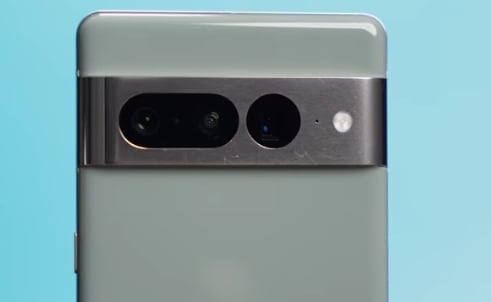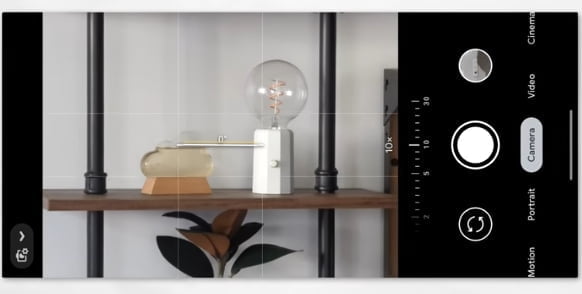Last year, I reviewed the Pixel 7 Pro and also checked out the regular Pixel 7. I later did follow-up reviews after six months with the iPhone 14 Pro and the Nothing Phone 1. Recently, I spent nearly two months reviewing the Galaxy S23 Ultra. What you may not know is that in between testing these phones, I kept going back to the Pixel 7 Pro. Now, six months after its release, I want to give you an updated review to explain why I’ve stuck with it for so long and whether it’s still a good buy in 2023.
Specifications
| Display | 6.7″ QHD+ LTPO Smooth Display – up 120Hz |
| Camera | 48 MP telephoto – 50 MP wide – 12 MP ultrawide – 10.8 MP front camera |
| Camera Features | Macro Focus – Super Res Zoom[5] up to 30x – Real Tone |
| Storage and Ram | 12 GB RAM – 512 / 256 / 128 GB storage |
| Battery | Over 24-hour battery[3] – Wired and wireless charging[21, 23] |
| Connectivity | Bluetooth, Wi-Fi, NFC |
| OS | Android 13.0 |
| Processor | Chipset: Google Tensor G2 (5 nm) CPU: Octa-core (2×2.85 GHz Cortex-X1 & 2×2.35 GHz Cortex-A78 & 4×1.80 GHz Cortex-A55) GPU: Mali-G710 MP7 |
| Price | $798.99 |
Fixes and Changes
I usually like to address any issues I mentioned in my initial review to see whether they’ve been addressed or not. However, thanks to the fact that the Pixel 7 Pro shipped with Android 13, which has provided a much more stable software experience compared to the previous year’s Android 12, there weren’t many significant issues at all. That being said, there were some areas with this phone that I thought could be improved. So, let’s briefly discuss each of them.
Battery Life

First area I want to talk about the battery life. When I first reviewed this phone, I said the battery life was decent, but not amazing. However, something odd has happened. The battery life has actually gotten worse since then. Initially, I could end the day with 30 to 40 percent battery left. But now, I’m struggling to make it through the day without the battery dying. Most days, it just about lasts until bedtime with only five percent left. Some days, it dies well before bedtime. This is disappointing, especially since my previous phone, the Galaxy S23 Ultra, could easily last until the end of the day with 50 percent left. I’m not sure if it’s a software issue or if there’s an app draining the battery. Regardless, if battery life is important to you, this phone might not be the best choice.
Cameras


Now let’s talk about the cameras, specifically the camera shooting experience. While it’s not bad at all, I did make some comments about how the shooting experience could be made more seamless. I mentioned issues with autofocus, the speed of switching between lenses, and the overall capture speed when taking multiple photos in quick succession. Unfortunately, none of those aspects have been improved significantly.

However, I must say that coming from the Galaxy S23 Ultra, which arguably has the most versatile camera configuration on the market, I have been really happy using the cameras on the Pixel 7 Pro once again. Despite its versatility, I felt that the Galaxy S23 Ultra had room for improvement in terms of image processing, and I was slightly disappointed with many of the images and videos I captured with it. On the other hand, returning to the Pixel 7 Pro, I have been much more confident in the results, especially when capturing photos. Additionally, I haven’t felt like I’ve been missing out on lens versatility at all.

I genuinely believe that Google has nailed the camera configuration with the 0.5x ultra-wide, the 1x main, and the 5x telephoto lenses, along with the sensor cropping trickery they’ve implemented. It feels like I have two additional lenses—a 2x lens and a 10x lens—thanks to their clever implementation. I’m aware that Samsung, Apple, and other manufacturers have also incorporated a similar 2x cropped mode on their phones, but there’s something different about Google’s implementation. When I tap the 2x and 10x buttons on the Pixel 7 Pro, it visually appears as if I’m switching to a different lens in the camera app, whereas on other phones, it simply looks like a digital zoom.
Do I hope that Google improves the issues I mentioned earlier to make the shooting experience more seamless? Absolutely! I’m keeping my fingers crossed that we’ll see some of those improvements in the next lineup of Pixel devices. However, apart from those issues, there’s still no phone I enjoy taking pictures with more than the Pixel 7 Pro.
Design

It’s not groundbreaking or particularly beautiful, but what stands out is how it feels in the hand. Before this, I was using the Galaxy S23 Ultra, which had a big boxy design that I liked. However, when I switched back to the Pixel 7 Pro, I was surprised at how nice it felt to hold. While I think a matte finish on the back and a fully flat display would make it even better, compared to the Galaxy S23 Ultra, this phone feels much more comfortable to hold.
Unfortunately, the bezels still aren’t uniform, and the rear panel still looks glossy, which disappoints me. But one thing I’m happy about is that Google kept the camera bar on the back, which I really like. It makes it easier to use when the phone is lying flat on a table, which is common for me as I film phones for a living. So, I’m glad Google kept this part of their design, and I hope they don’t change it.
Display

Technically speaking, it may not be the best display on the market, at least on paper. However, for me, pixel 7 Pro is an excellent display that I absolutely love using. In other words, I don’t feel like the display on this phone is lacking in any area compared to the competition, which is great. It’s super bright, vivid, and sharp. It has a lot of punch to it, and most importantly, it’s incredibly fluid. Of course, part of this fluidity is thanks to the software, which we’ll discuss a bit more later on.
Haptics
I have enjoyed using pixel 7 pro so much, which is why I have continued to gravitate back to it over the past six months, despite trying out various other options, including some that are considered more premium. Firstly, let’s talk about the haptics. I already knew that the haptics in this phone were good, but after using both the iPhone 14 Pro and the Galaxy S23 Ultra in the past few months, I can confidently say that the haptics in this phone are the best on the market, at least in my opinion. They are of super high quality and beautifully implemented throughout the user experience. It truly gives this phone an incredibly premium feel every time I use it. I seriously love them.
Face Unlock + Fingerprint Sensor

In my opinion, it’s the best implementation among all phones available right now, except for those with capacitive fingerprint sensors. But Google has nailed it with this implementation. I’m surprised other manufacturers haven’t managed to get it right yet. One key factor is that the fingerprint sensor icon stays visible when your face is successfully recognized. So, Samsung, OnePlus, and other manufacturers, take note: study Google’s face unlock implementation and replicate it for your phones really that good.
Software + Performance

As mentioned earlier, the software on the Pixel 7 Pro has been much more reliable compared to the Pixel 6 and 6 Pro. In the Android world, this phone offers the smoothest experience, rivaling even iOS. Many people, including myself, have praised the smoothness of the latest version of One UI on the newest Galaxy devices. However, switching back, I was amazed at how much smoother the software experience was, even when using a third-party home screen launcher.
Regarding the home screen launcher, I wish Google would give us more flexibility with the default Pixel launcher, I’ve been complaining about it for about five years now. While it’s smooth and has gorgeous animations, I refuse to use it due to its limited customization options. I simply wish they would allow us to hide the search bar and add glance widgets. Not being able to hide them prevents users like me from creating sleek, minimal home screen setups.
Although I appreciate being able to use a third-party launcher like Nova Launcher without sacrificing much fluidity, experiencing the absolute smoothness of the stock Pixel launcher makes me want to use it instead. Recently, there’s been talk of Google experimenting with allowing users to hide the At A Glance widget in Android 14, which would be fantastic. However, we don’t know if this feature will be implemented, and if we still can’t hide the search bar, I won’t use the Pixel launcher. So, I hope Google listens to customization enthusiasts like me and allows us to hide both widgets. Additionally, it would be great if they added support for third-party icon theming and the ability to hide apps from the app drawer.
Final Thoughts
So despite not many changes since the last time I used Pixel 7 Pro, and in some cases, like battery life, things even seeming worse, I must admit that the circumstances in which I’ve used this phone have truly made me appreciate how great it is and how well it aligns with my preferences. If you’ve been considering getting one and you’re unsure if it’s still worth it at this stage, my recommendation would be the Pixel 8 lineup.
Google Pixel 7 Pro Review
Despite some drawbacks like declining battery life and limited customization options, the Pixel 7 Pro offers a compelling user experience with its impressive display, smooth performance, and excellent camera capabilities. If you prioritize software stability and camera quality, it remains a solid choice.
- Design9
- Battery7
- Display9
- Performance10
- Camera9
